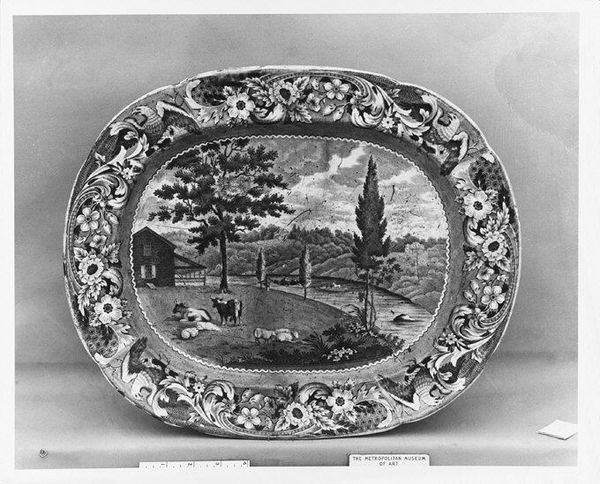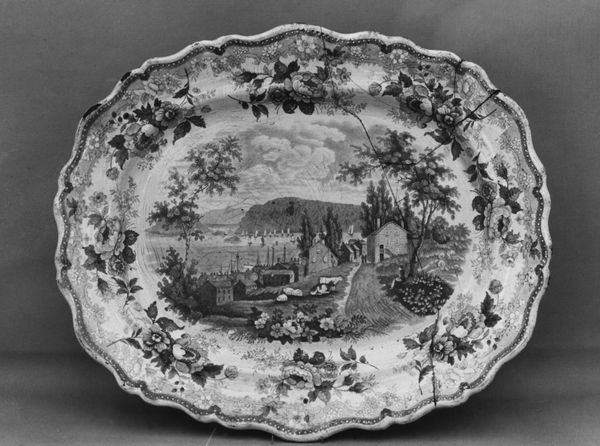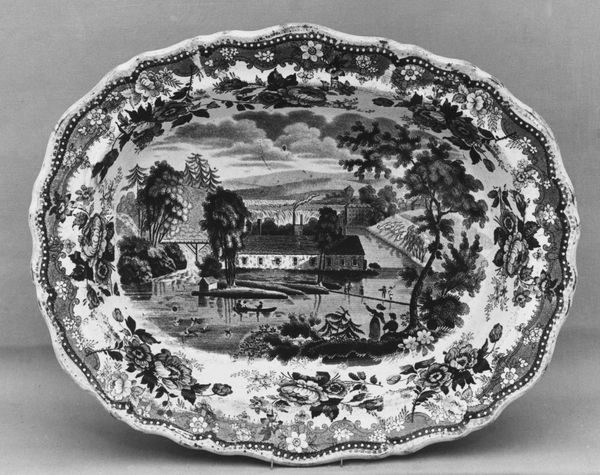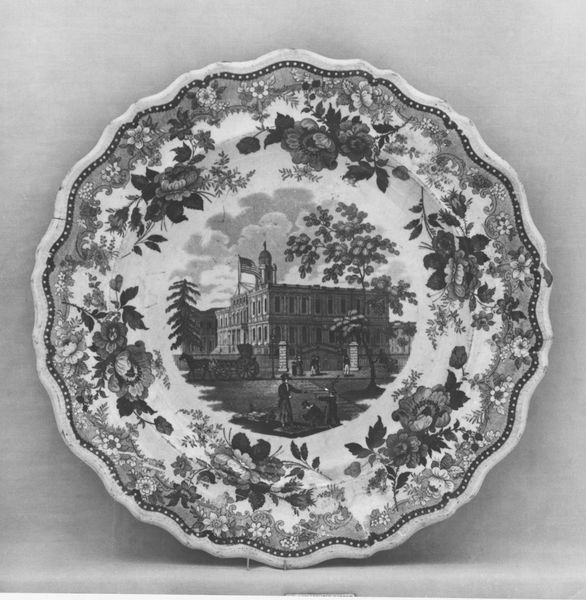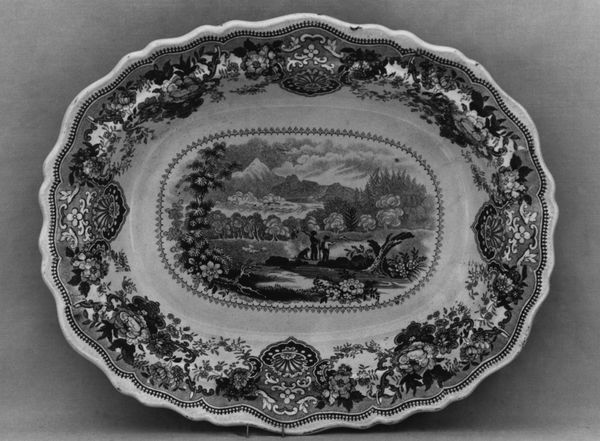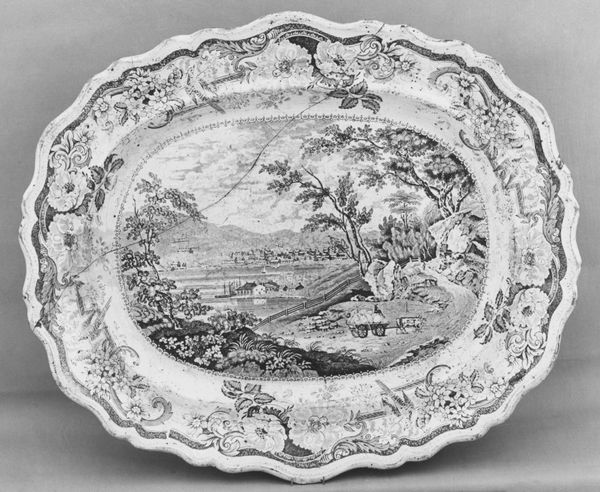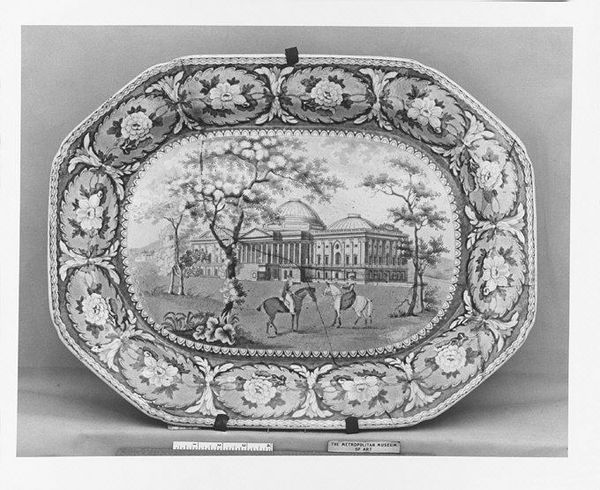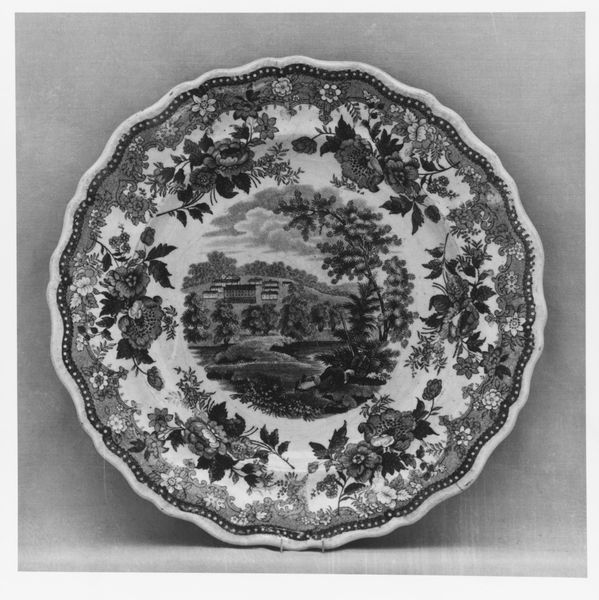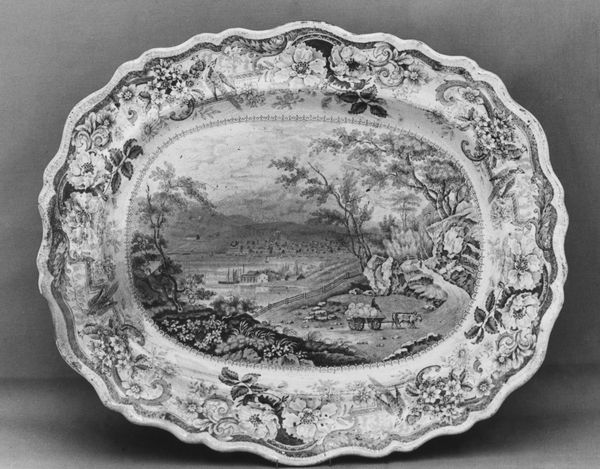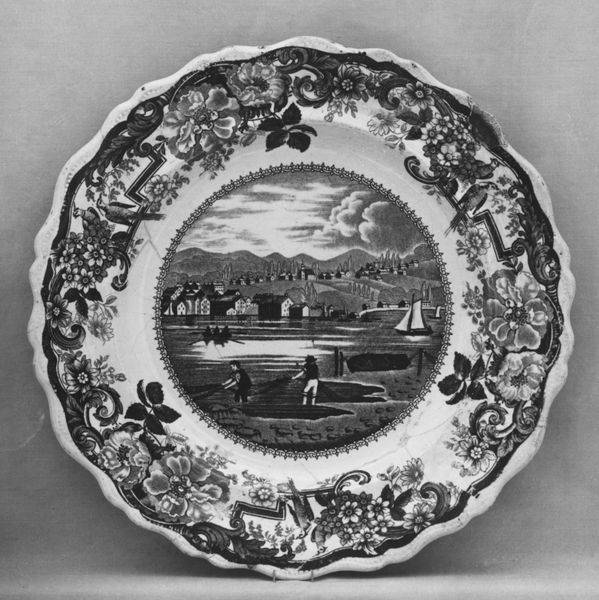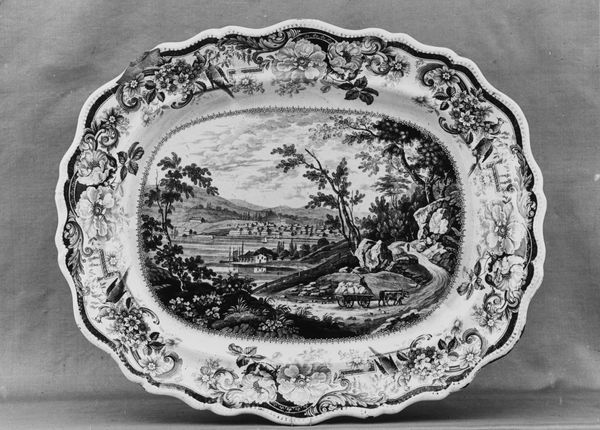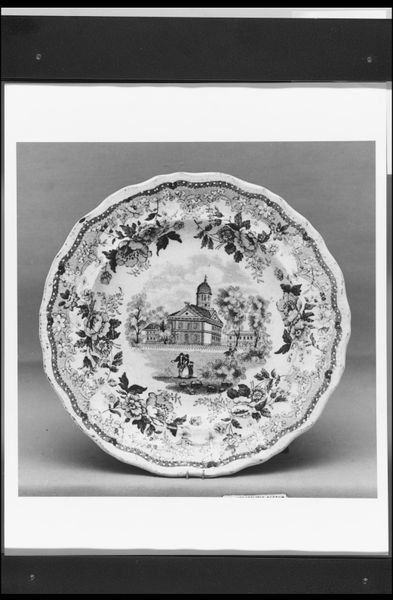
ceramic
#
landscape
#
ceramic
#
flower
#
stoneware
#
decorative-art
Dimensions: 17 7/8 x 14 1/2 in. (45.4 x 36.8 cm)
Copyright: Public Domain
Editor: Here we have a "Platter" crafted from stoneware sometime between 1828 and 1838 by Job and John Jackson, currently residing at the Metropolitan Museum of Art. It's hard to believe something so functional could be so ornate. How would you interpret this work, focusing on its aesthetic properties? Curator: The visual organization immediately strikes me. Consider the composition: a central landscape, carefully framed by a dense floral border. This contrast establishes a visual hierarchy, drawing the eye inward. Note also the repetitive patterns. The scalloped edge and floral motifs, creating a rhythmic visual experience. Does this ordered approach affect your appreciation of the piece? Editor: It does, but I'm wondering if it also restricts its expressive potential. Is it *too* structured? Curator: That's an insightful question. The formalism emphasizes structure. The visual relationships, and the balance of elements create a unified aesthetic experience, irrespective of the subject. But perhaps the very act of containment on this round frame creates its own interest by providing structure in two and three dimensions? Do you agree that its function as a dish and not simply a painting has a powerful impact on how you think about it? Editor: I hadn’t considered how much the function matters. The visual layering almost suggests stages in a theatre – the landscape as background, flowers framing, edge is like the curtain…it changes the way I read it now. Thanks! Curator: The interplay between form and function is at the heart of decorative arts. Editor: Indeed. I see the beauty of considering these structural aspects. It opens up the work.
Comments
No comments
Be the first to comment and join the conversation on the ultimate creative platform.
